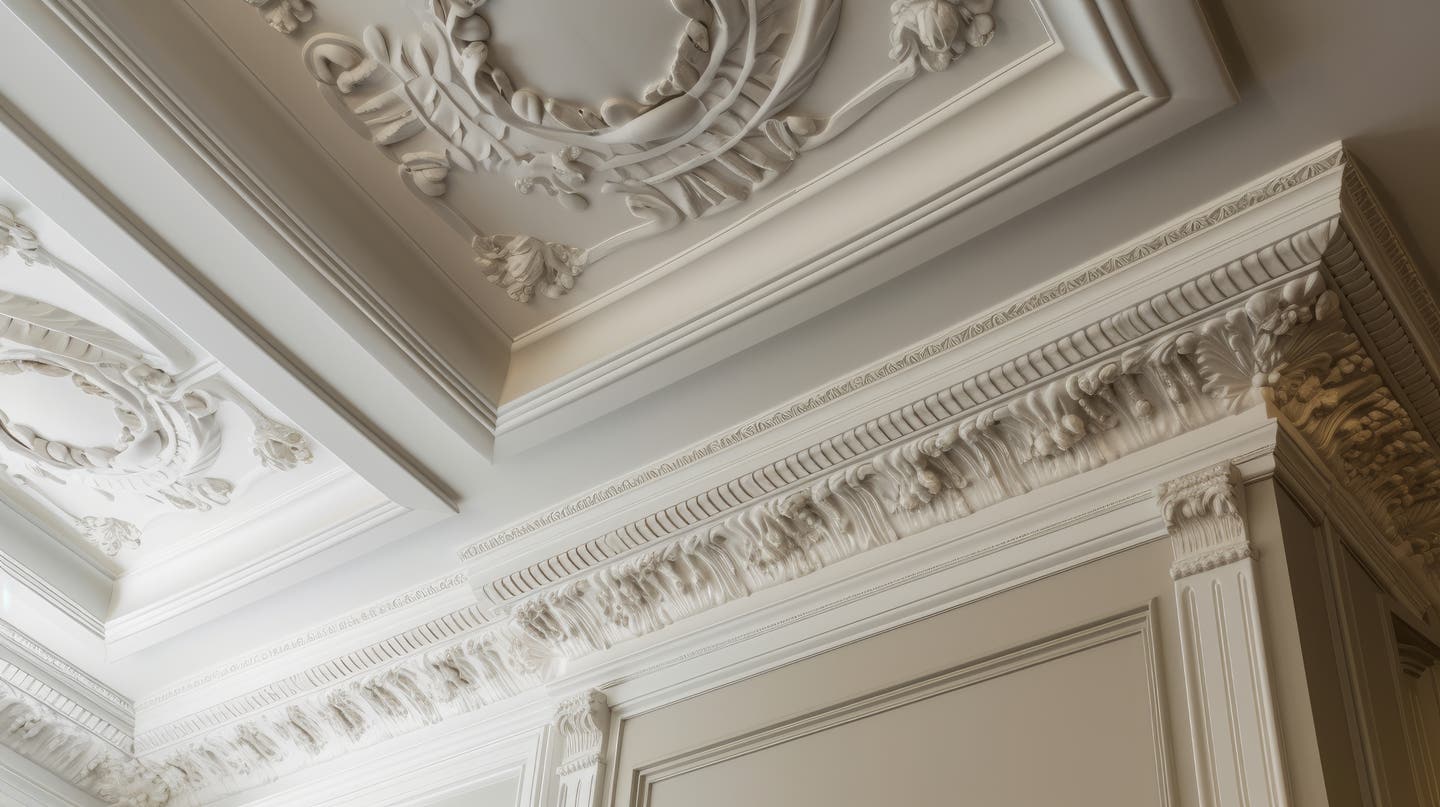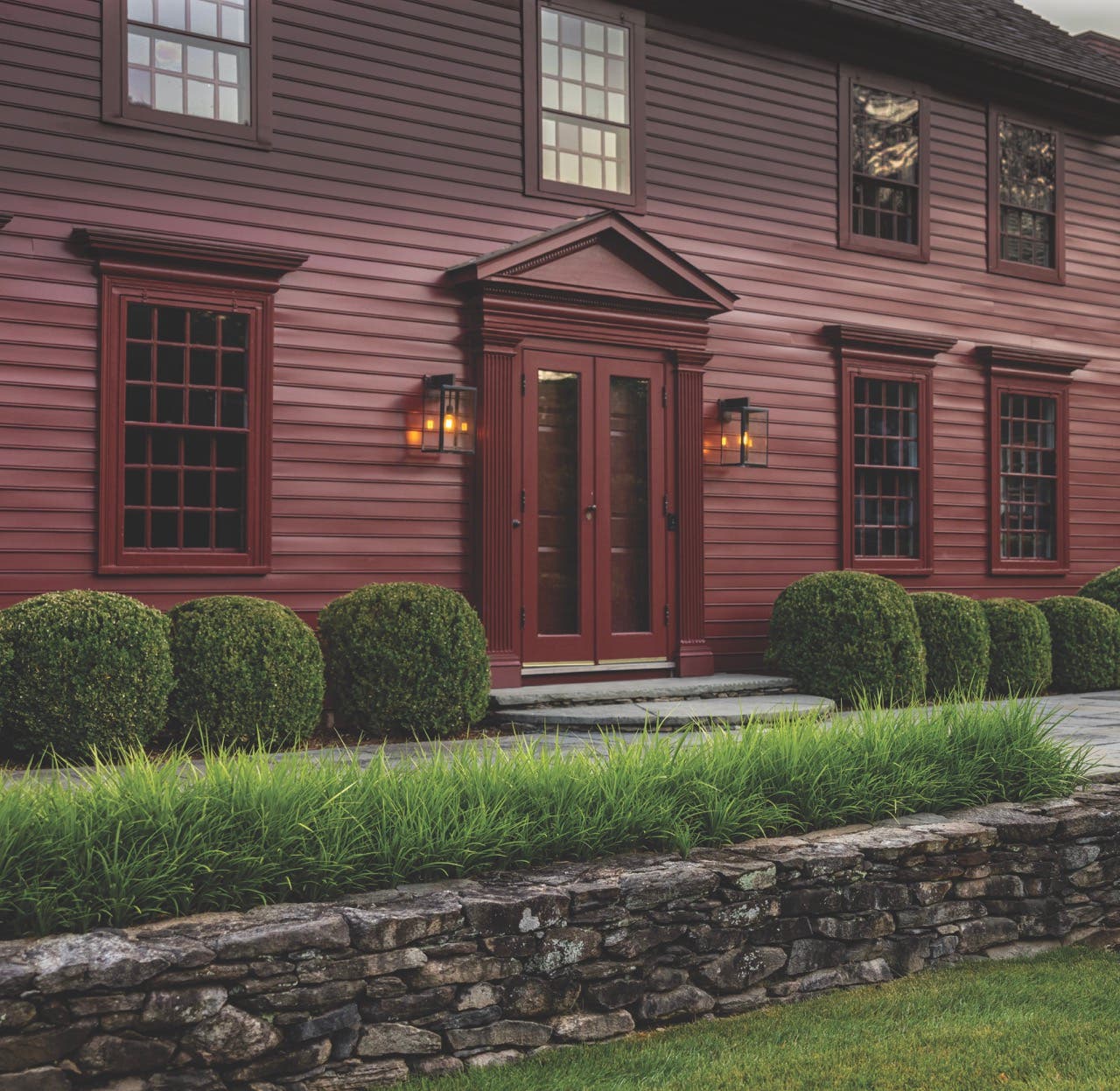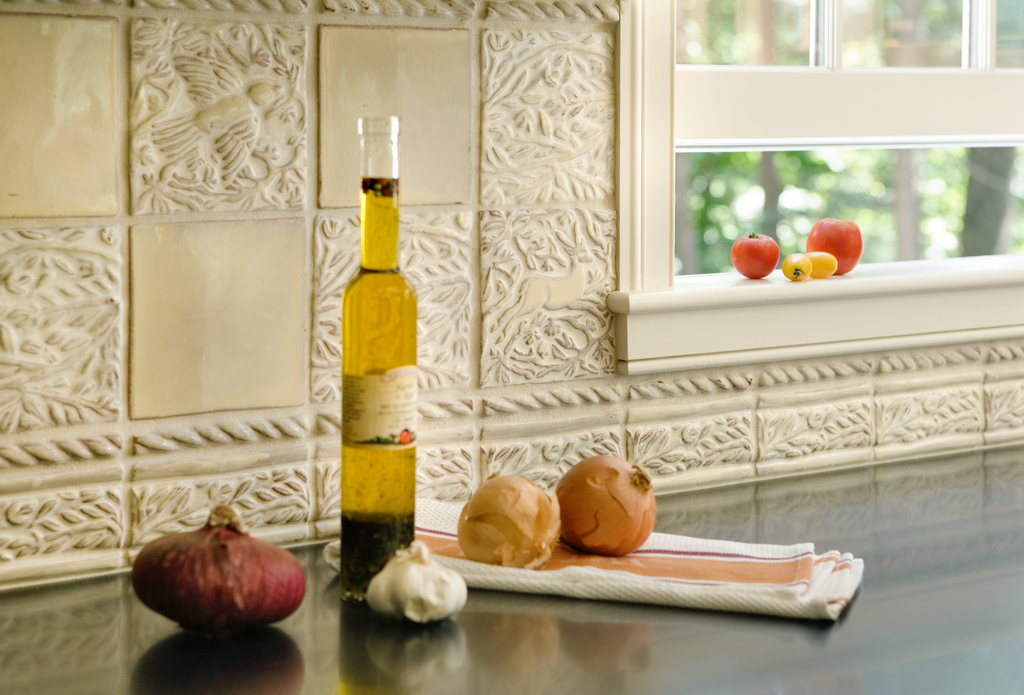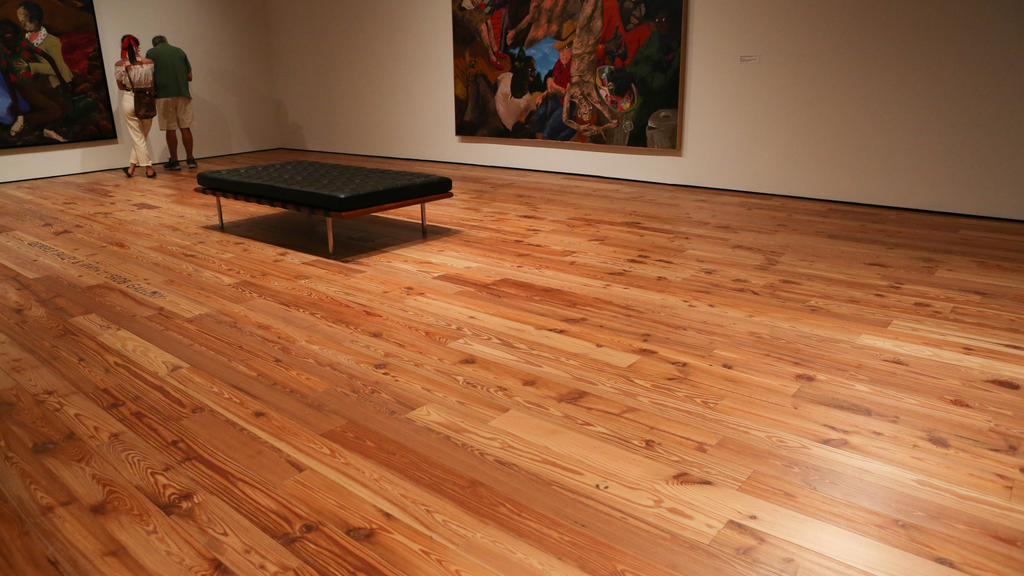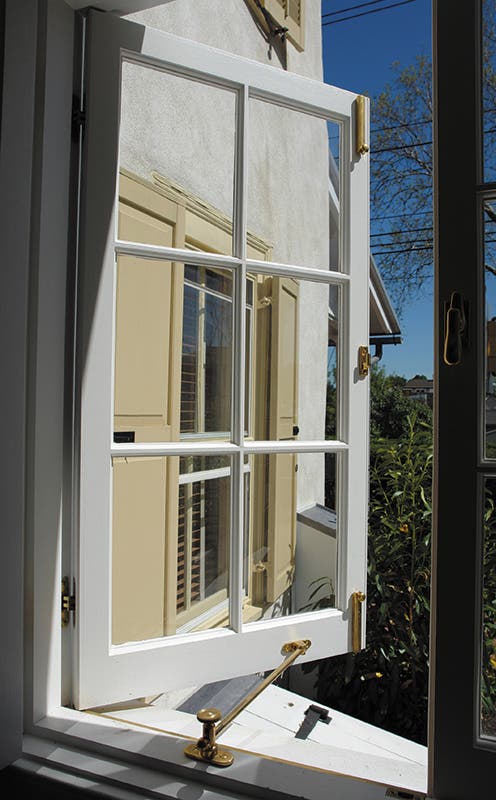
Windows & Doors
Options for Stock Wood Windows
Custom wood windows can be manufactured in unlimited styles, shapes, sizes and wood species and architects today aren’t inhibited in their designs. But when it comes to stock and stock-manufactured windows, what are the constraints? Four prominent architects offer their views on the use of wood windows in their residential projects: the companies they recommend, details they specify and advantages and disadvantages of using stock or stock-manufactured wood windows.
While the experts do not see eye to eye on the level of quality of available windows, they do agree that some manufacturers offer respectable stock and stock-manufactured windows. It’s a matter of finding the right combination of first-rate mechanicals and pleasing aesthetics.
Stock versus Custom
Owner and principal of Berwyn, PA-based Peter Zimmerman Architects, Peter H. Zimmerman, AIA, NCARB, uses both custom and stock-manufactured wood windows. For a quarter of his projects, which range from new designs to restorations and additions, Zimmerman specifies stock-manufactured windows. He uses windows from high-end manufacturers approximately 20 percent of the time, while custom windows from local mill shops make up about 40 percent of his wood-window selection.
The choice between stock-manufactured and custom wood windows, Zimmerman says, “really boils down to a balance between, on the one hand, ease, convenience, cost and energy efficiency and, on the other, purity of aesthetics and authenticity. It differs from client to client and for every project and situation, but we’ve been using custom more and more often, because, while we’d like to marry all of these elements, we’re interested in more historically authentic windows than stock-manufactured offers.”
Partners Anne Fairfax and Richard Sammons of Fairfax & Sammons Architects in New York City use only custom windows in their firm’s projects for that very reason. “Historical accuracy is not often the top concern of window manufacturers these days,” says Sammons. “Unfortunately, production now dictates aesthetics, so we specify only custom windows for our clients’ homes.”
Fairfax and Sammons feel that the benefit of stock or stock-manufactured windows is limited to their cost savings. But that is not a reason to use them, warns Fairfax. “Stock is less expensive, but we’re looking for a higher-end product,” she says. “Plus, it may only be a cost savings upfront, because stock windows won’t last nearly as long as well-designed custom windows and the price may even out.”
For architects working at larger scales and more restrictive budgets, stock or stock-manufactured wood windows are the best option. City, town and neighborhood designer Urban Design Associates (UDA) of Pittsburgh, PA, uses only stock-manufactured windows. “We specify stock-manufactured windows,” says Don Kaliszewski, principal at UDA, “because we’re often designing for production builders or on mid-market homes where budgets are constrained. Also, it’s easier for builders to order stock when you need windows for an entire neighborhood.”
Recommendations
Zimmerman reminds the architectural trade that there are different levels of stock-manufactured windows, from the highest end – which, for him, includes distributors and suppliers such as Tischler Und Sohn of Stamford, CT; Zeluck, Inc., of Brooklyn, NY; and Little Harbor Window Co. of Berwick, ME – to the high end, which includes Loewen of Steinbach, MB, Canada; Marvin Windows & Doors of Warroad, MN; Pella Corporation of Pella, IA; and Kolbe & Kolbe Millwork Co. of Wausau, WI.
Kaliszewski recommends stock-manufactured windows from Kolbe & Kolbe, Marvin, Pella and Medford, WI-based Weather Shield Mfg. Co. Sammons acknowledges that Weather Shield might be a good stock-manufactured choice. “Some companies, Weather Shield included, are trying to re-engage architectural concerns and merge functionality with aesthetics,” he says.
For their own house in New York City, Fairfax and Sammons used single-pane, true-divided-lite 1950s-style windows from Brosco of Andover, MA. “Although we don’t use stock windows on our clients’ homes – because we feel restricted by the limited selections – for our own house we were very pleased with Brosco windows,” says Sammons.
“For one of the most expensive components of a house – whether we’re talking about stock or custom – windows from Brosco are very reasonably priced,” says Fairfax.
Zimmerman finds that the price of custom windows falls somewhere in between that of the stock-manufactured and stock windows. “Custom windows from local mill shops are more expensive than the stock products,” he says, “but less expensive than manufacturers like Tischler and Zeluck.”
For all of the companies, there is a hierarchy of products. “Some of the companies’ collections or lines are better than others,” says Zimmerman. “Of the stock-manufactured lines, we use Pella’s Architect Series or Marvin’s Ultimate. Both lines have a wider selection in the ability to do customization in lite configurations and the size and proportions of the mullions are good.” The Architect Series from Pella is also a favorite of Kaliszewski; it offers a selection of traditional grille patterns, other design options and “the windows are well constructed,” he says. Sammons recently advised Weather Shield on its Collections line, which is developed for distinctive architectural styles instead of a “one-product-meets-all-needs” window. It also has a line specifically for restoration projects with historically accurate 1¾-in.-thick sash, 5⅛-in. jambs and other options.
Options
There are many options available when choosing windows. “Even when you choose a stock-manufactured window,” says Sammons, “you get to pick the size and shape and some other details.” Both Kaliszewski and Zimmerman have found the shapes and sizes that they need among stock-manufactured options. “They are adequate for about 20 percent of my firm’s projects,” says Zimmerman. “One can usually get the desirable frame, jamb and mullion depths and dimensions. There are also many shapes available.” Kaliszewski says that the variety of sizes offered has improved over the last ten years or so.
Zeluck, for example, offers a wide variety of sizes and shapes from rectangular to circular to eyebrow. Pella offers numerous standard sizes and, for an additional fee, custom sizes as well. Weather Shield’s operable windows come in standard sizes but the size of its fixed windows is only limited by the allowable dimensions of glass, which is about 50 sq.ft.
In terms of materials, all three architects prefer mahogany over other wood species, and there are plenty of companies that offer this tropical hardwood. “We use painted mahogany windows,” says Fairfax, “also known as 100-year windows, because mahogany is a rot-resistant, high-grade species.”
Mahogany is available from Pella and Kolbe & Kolbe, which also offer pine, alder, Douglas fir and other species; Marvin, though it specializes in ponderosa pine; and Weather Shield, which counts mahogany among its eight different wood species. Many hardwoods and exotic species are available from Zeluck, which specializes in solid Honduras mahogany. Douglas fir is Loewen’s specialty.
Glazing is yet another selection to be made and most companies offer a variety of styles. Fairfax uses restoration glass that is either light or heavy, which refers to the level of waviness. “Wavy glass is a beautiful product,” she says, “because it gives your window and your house life. It casts varied shadows on both the interior and exterior of the house, which adds a lot of interest.” Other glass options include low-E, laminated, insulated, tinted, energy-efficient glass and even glass that blocks UV rays.
Fairfax and Sammons recommend single- versus double-glazed windows, because the former will outlast the latter. “The standard windows are double glazed,” says Sammons, “because companies recently became interested in energy conservation. This is a noble aim, but these windows have a poor life expectancy. For superior performance, a single-glazed window with an energy panel that fits into the sash is the optimal choice.” Fairfax adds that this combination offers “no opportunity for air infiltration. And they are also aesthetically more pleasing.” Marvin is one manufacturer that offers this arrangement.
As for finishes, a number are usually available, though a few companies don’t pre-finish the interior. Primed interior versions and high-performance painted exteriors are another option. Though Zimmerman does not use them in his projects, he finds that the cladding and finishes of stock windows more durable than those of custom windows, which are painted on site, but Sammons says that if the painters do a good job there shouldn’t be any issue.
Brosco is one company that does not supply painted wood windows, so Fairfax warns that its products may require more upkeep over the years. “But that’s not a bad thing,” says Sammons. “Anything that is considered no-maintenance means that it cannot be maintained.”
When it comes to the details, all three architects prefer wood jambs, which all of aforementioned companies provide. “A lot of the real stock companies, though, use vinyl or neoprene liners that are exposed on the exterior,” says Kaliszewski, “so you need to be careful. Kolbe & Kolbe is one company that has a nice detail that hides the jamb liner.”
With each stock or stock-manufactured window comes a range of hardware and hardware finish options. “The hardware selection is an individual preference,” says Zimmerman. “I personally like to use un-lacquered brass or bronze hardware, which takes on a weathered patina, but few companies offer these.” But there is a wide array of hardware options, including stainless-steel hardware from Tischler and European-style solid-brass hardware from Zeluck. Pella provides window hardware from Rocky Mountain Hardware, a highly regarded company, says Zimmerman. Rustic-looking hardware from Stone River Bronze, another reputable hardware company, is available from Marvin and Weather Shield.
The mechanics of a wood window, such as the locking mechanisms and spring-loaded balances or weights and chains, are one way to ascertain a window’s performance abilities, so the architects are naturally concerned about the quality of these details. “Weights and chains perform better than pressure balances,” says Fairfax, “which aren’t 100-year products. But pressure balances seem to be the standard.”
“Chains and other assembly pieces can’t be easily or inexpensively changed, so many companies sell spring-loaded balances, because most people want the low-maintenance choice,” says Zimmerman. “Custom may be a better option if one is looking for weight-and-chain mechanisms.”
Improvements
Kaliszewski says that the variety of muntin profiles is one aspect of the stock and stock-manufactured window market that has gotten better over the years. “Muntin profiles have improved,” says Kaliszewski, “especially for simulated-divided lites, which UDA often uses.” Some manufacturers, like Tischler and Zeluck, now offer two to three profiles of both thin and thick muntins, which are specified according to the style of the house.
Zimmerman also sees steady improvement in this market. “Many manufacturers are asking for architects’ input and have actually taken their comments and criticism into account in their new designs,” he says. “I think the stock-manufactured wood windows are more aesthetically pleasing than they were a decade or more ago.” But Sammons is less optimistic. “The mass-produced historically styled window market is still limited,” he says. “It’s the non-architectural-grade wood windows that are continuously produced.”
Though there is little consensus about styles, hardware options and other details, it is agreed that stock-manufactured wood windows can still be of respectable quality. Kaliszewski, Zimmerman, Fairfax and Sammons advise fellow architects that it is important to research the products in detail, down to visiting a number of distributors and handling the product options; continually evaluating new products on the market; visiting local dealers; trying to be green; and holding the client’s hand through what can be an extremely confusing process.




